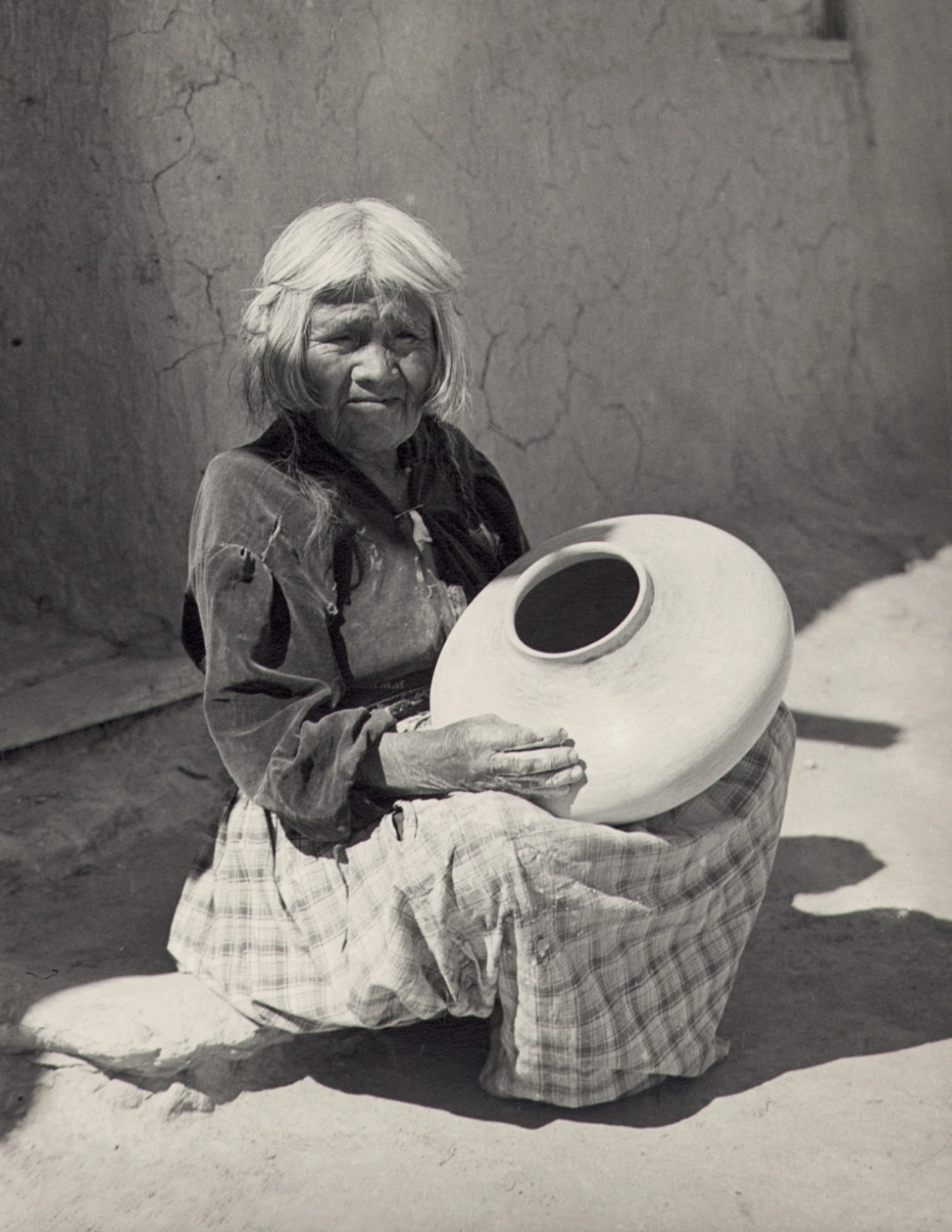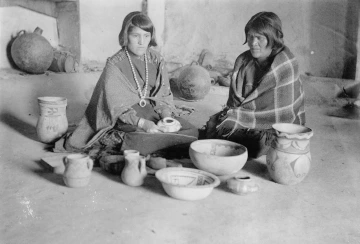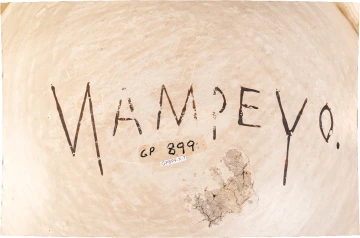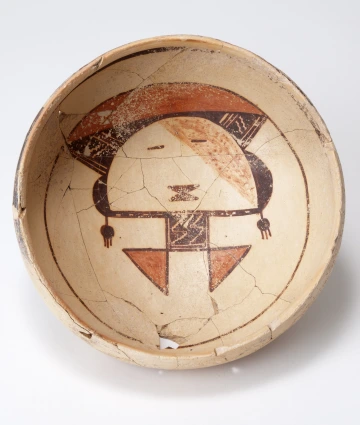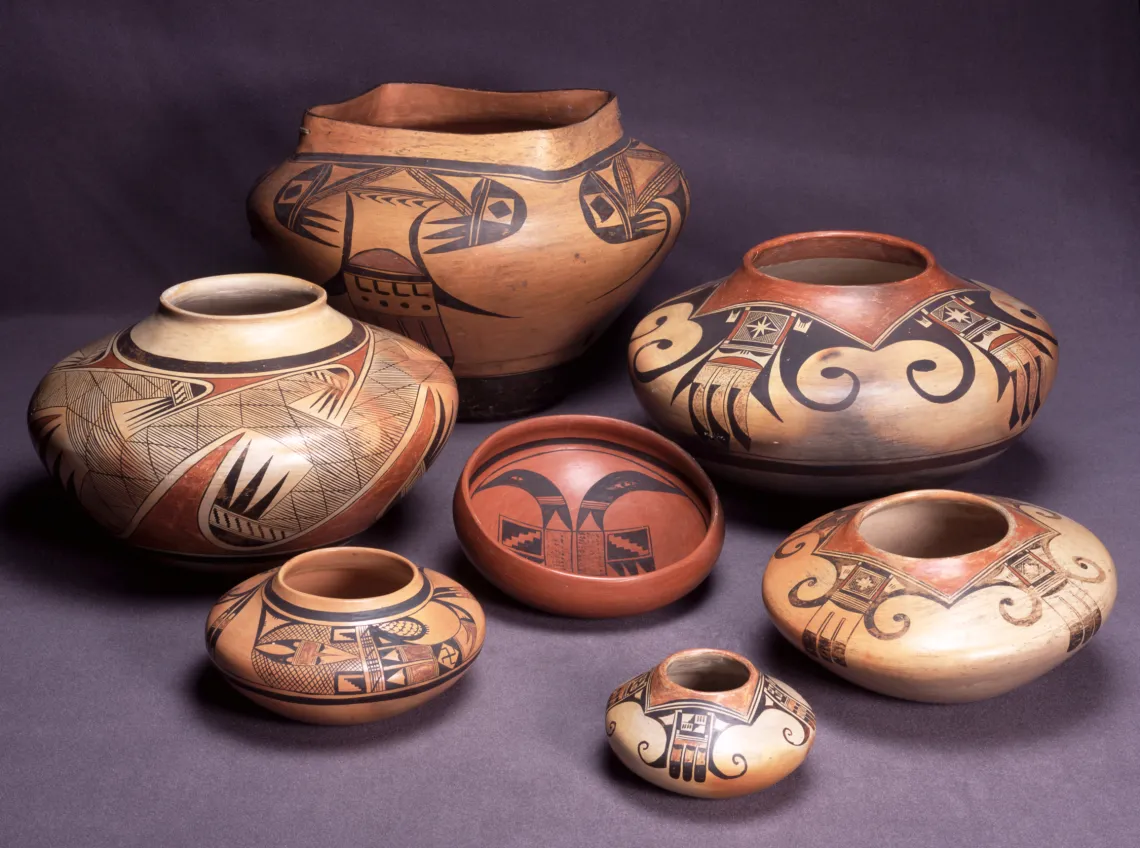
A selection of Nampeyo's pottery from ASM's permanent collections.
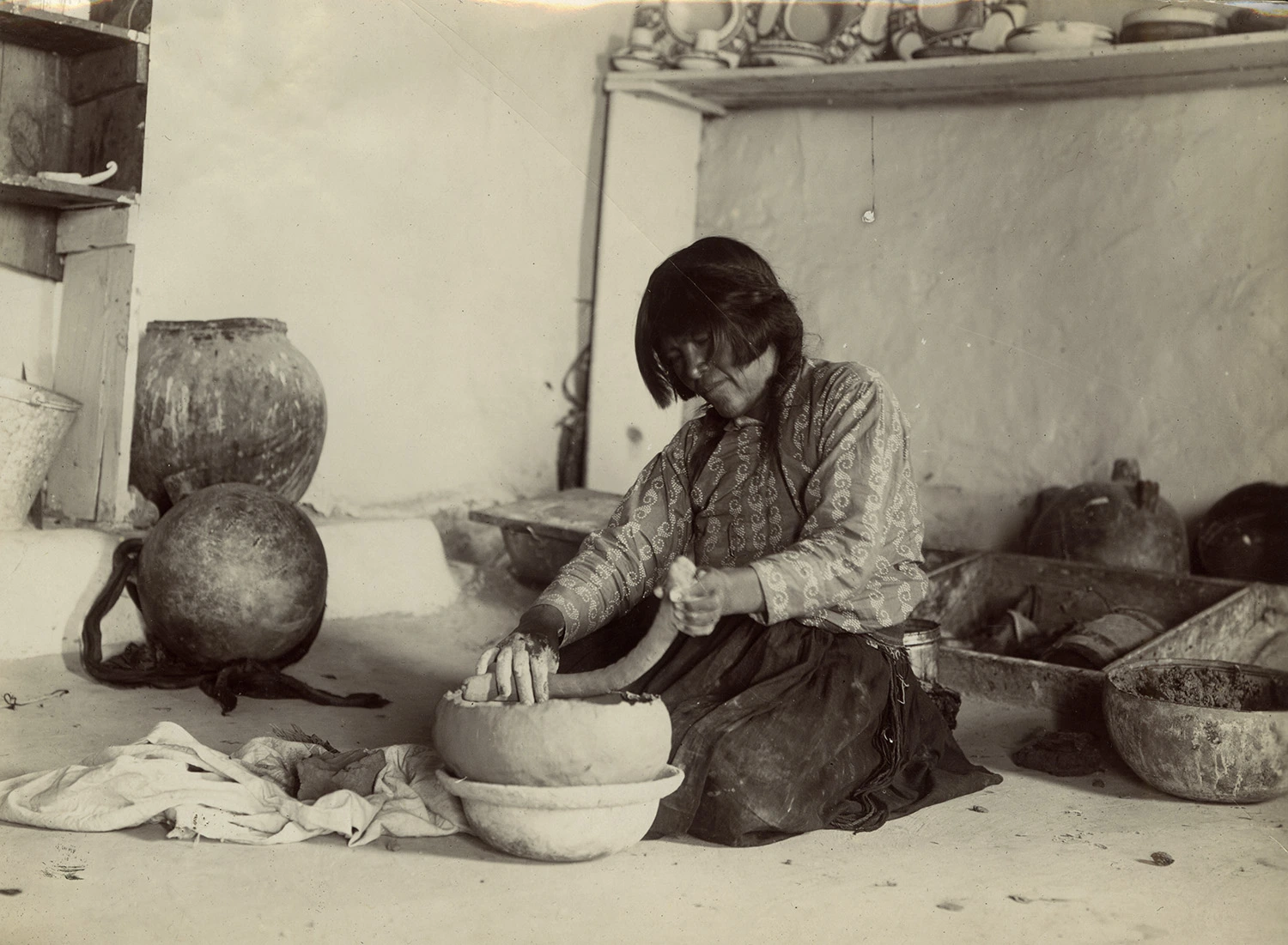
Nampeyo coiling a vessel in a basin used as a "puki" (base mold), 1901. Adam Clark Vroman, photographer, Smithsonian Institution photo #32357-F. Note utilitarian pottery in the background.
Gallery of Nampeyo Pottery | Timeline of Nampeyo's Life
Quotskuyva Family Commentary | Nampeyo's Pottery-Manufacturing Stages
Additional ASM Pottery with Possible Nampeyo Attributions | Daughters in Clay
References and Acknowledgements
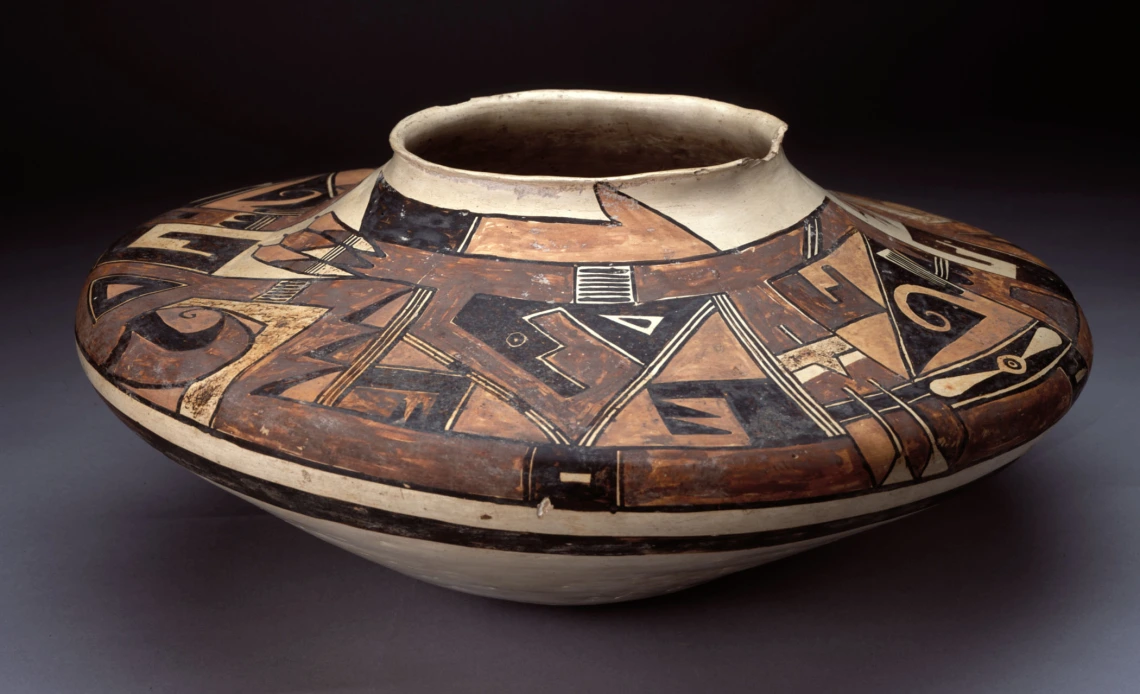
Sikyatki Polychrome jar, c. 1350–1625 CE. Nampeyo’s signature "flying saucer"–shaped jars, with complex design composition derived from Sikyatki Polychromes, such as this stunning example. Diameter 41.1 cm. (ASM #GP-4730).
This jar has a design that to the modern eye reads as a propeller. Dextra Quotskuyva used elements from this jar in one of her pots: "I designed this one already (see Struever 2001:Fig. 22 for one example). Now, I remember when I saw it, because I remember when somebody asked me what that was. No, it's not a propeller….The Martians were here early (she chuckles)..." Dextra Quotskuyva, 1998
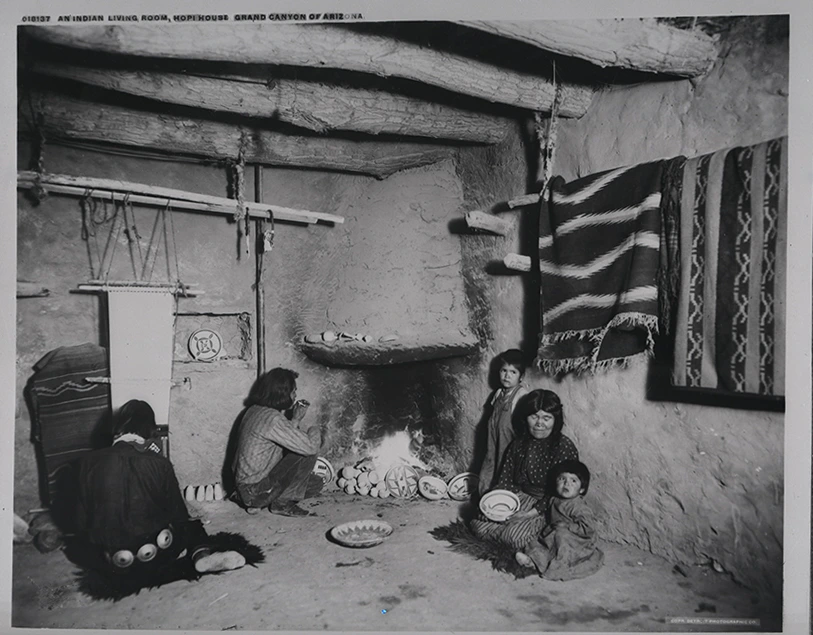
"An Indian Living Room," Hopi House, Grand Canyon, 1905. William Henry Jackson, photographer. Colorado Historical Society #WHJ18137. Nampeyo with children and husband, Lesso, tending a pottery firing in the room's corner fireplace.
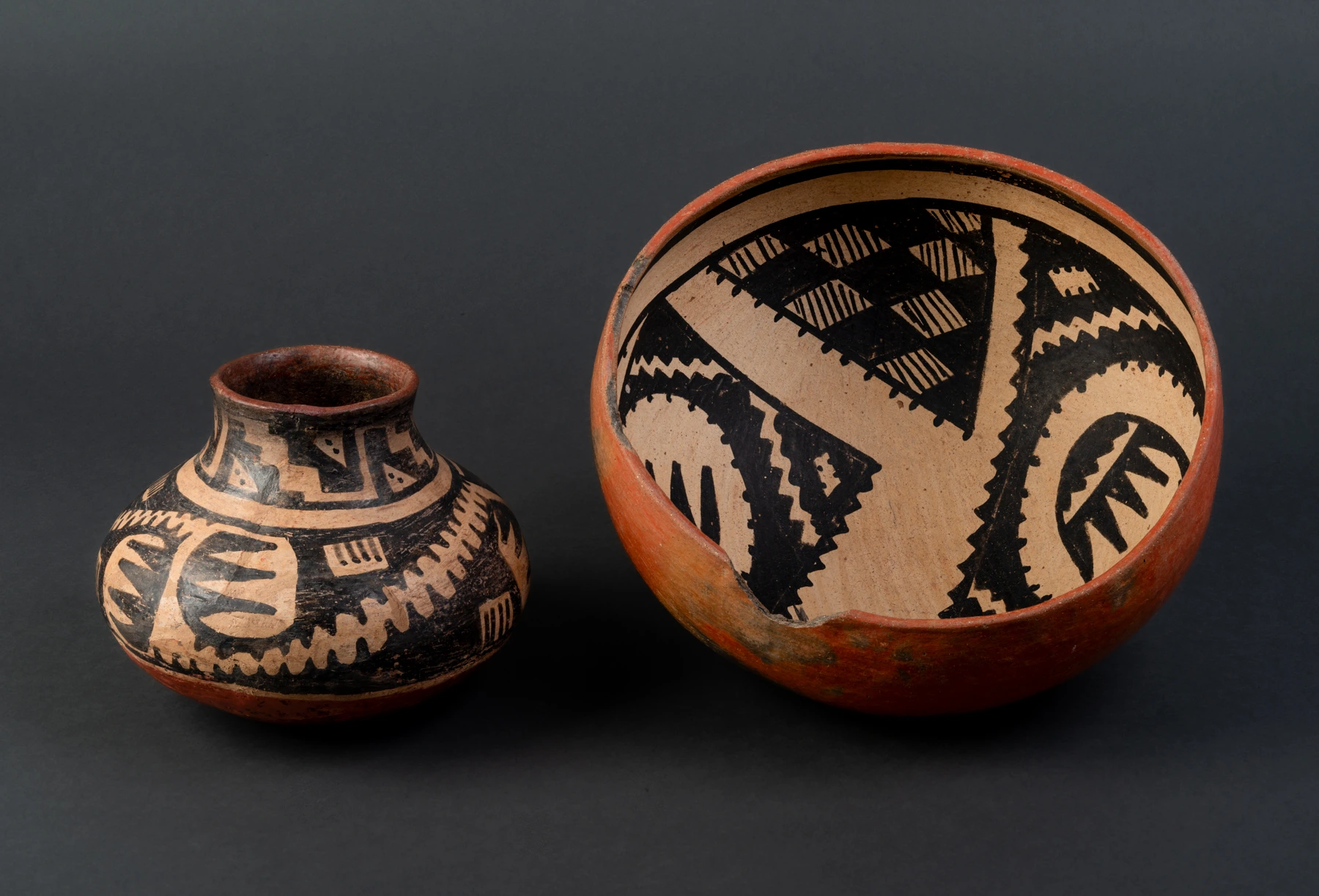
Gila Polychrome pottery with the birdwing designs that Nampeyo favored. Both came to ASM as gifts from the Gila Pueblo Foundation in 1950. Left: Gila Polychrome jar, Salado, Globe-Miami Province, c. 1300–1450 CE, Gila Pueblo, Gila County, AZ. Diameter 19 cm. (ASM #GP-8702). Right: Gila Polychrome bowl, Salado, Tonto-Roosevelt Province, c. 1300–1450 CE,
Keystone Ruin. Diameter 29 cm. (ASM #GP-49023).






